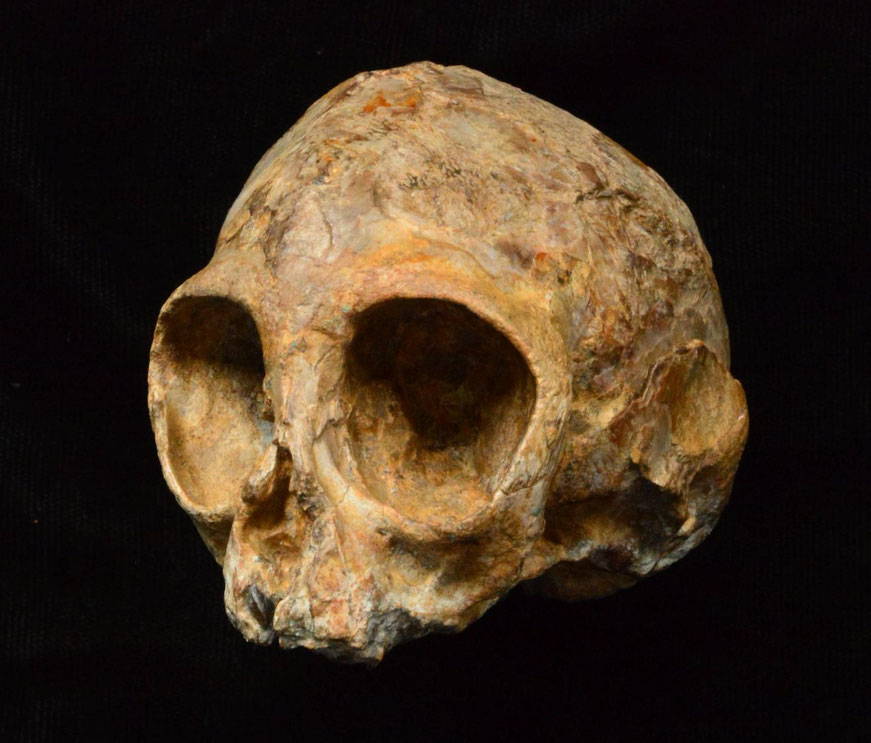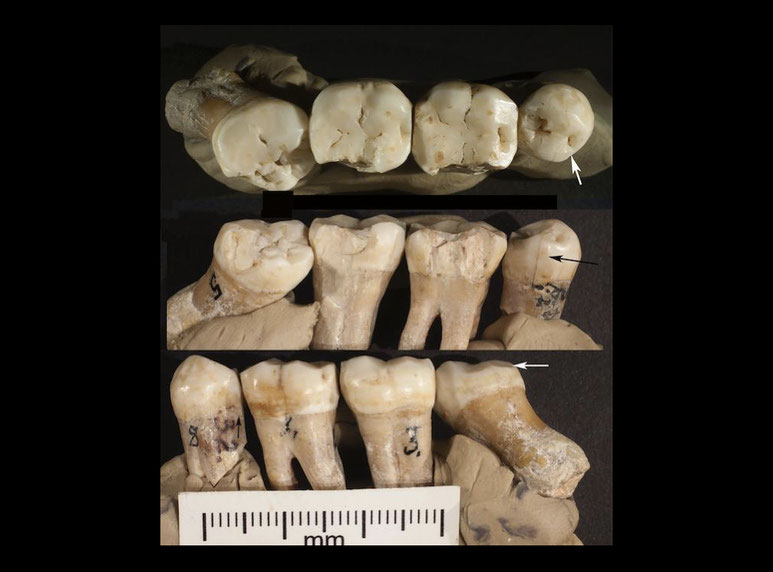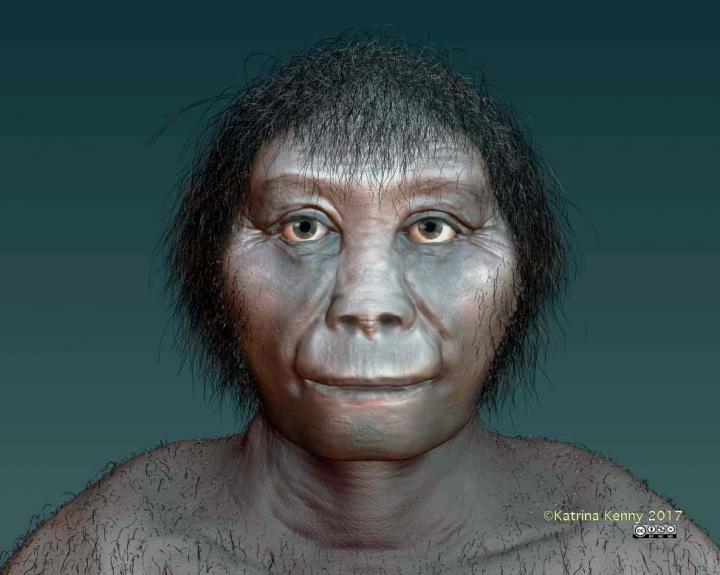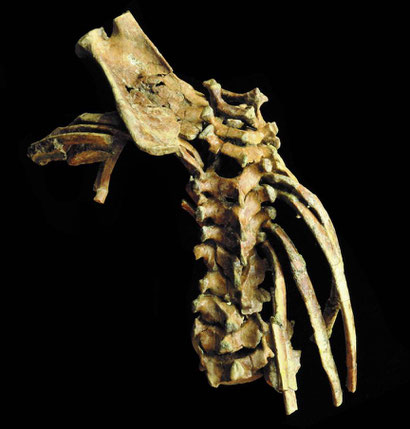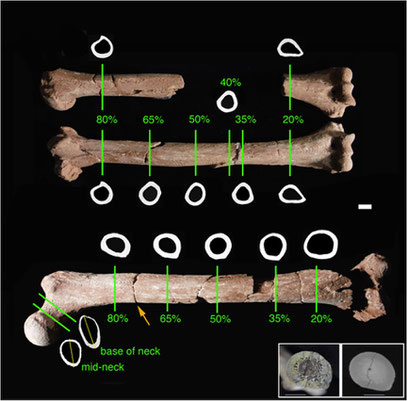Evolution · 15. August 2017
Anthropologists have found a fossil that puts us one step closer to finding the elusive shared ape/human ancestor.
Evolution · 13. July 2017
Ever wondered what to do about a toothache if you’re stranded 130,000 years in the past? Worry not dear friend, at least one neanderthal has you covered. A research team led by Dr. David Frayer, professor emeritus of anthropology at the University of Kansas, has uncovered evidence of “prehistoric dentistry” on the teeth of one neanderthal suffering from a partially impacted molar and misaligned premolars. Frayer and his team found deep, intentional grooves on various surfaces of the...
Evolution · 08. June 2017
The prevailing theory within paleoanthropological circles is that Homo sapiens evolved around 200,000 years ago in eastern Africa and spread out from there. New research, however, indicates we may have to rethink our origins story. An international group of scientists led by Jean-Jacques Hublin of the Max Planck Institute discovered fossil remains of at least five early Homo sapiens in Jebel Irhoud, Morocco. The five individuals were found in-situ with a cache of heat treated flints, which...
Evolution · 07. June 2017
How did Lucy and her ilk choose a mate? Did her Paranthropus robustus cousin, we’ll call her Elenor Rigby, turn to Lucy and say, “hey, look at the sagittal crest on that one!”? She might have. Researchers from the Australian National University (ANU) have analyzed sagittal crest size in great apes and gibbons and now hypothesize that crest size may play a role in social signaling and by extension mate selection. They postulate that the social behavior they observed in apes can be useful...
Evolution · 30. May 2017
Homo floresiensis, more commonly referred to as “the hobbits” due to their small size, has a new home in the evolutionary tree according to a study led by Dr. Debbie Argue of the Australian National University. Scientific debate over how Homo floresiensis fits in the phylogenic tree has raged since the species was first discovered on the Indonesian island of Flores in 2003. According to Argue et al., three main hypotheses have emerged: the hobbits are descendants of Asian Homo erectus and...
Evolution · 25. May 2017
Researchers from the University of Tübingen, the Bulgarian Academy of Sciences, and the University of Toronto, Canada have published two papers in PLOS ONE in which they claim to have found the likely ancestor from which humans and great apes split. So who is our mystery ancestor? The research team has given Graecopithecus freybergi the title based on its dental root and pulp canal characteristics. Fuss et al., authors of one of the two papers, state that molecular studies show a split between...
Evolution · 24. May 2017
The remains of an Australopithecus afarensis that died in infancy are yielding clues about the evolution of the human spinal column. The infant, named Selam by researchers, lived over three million years ago, died at the age of 2 1/2 years, and according to a new study published by *Ward et al, has an unprecedented amount of spinal preservation. Like many attributes of the hominin body, the spinal column began to change when our early ancestors started walking upright. However, specific spinal...
Evolution · 22. May 2017
Lucy, the first Australopithecus afarensis ever found, likely spent more time in the trees than previously thought. Discovered in the 1970s (and yes, named after the Beatles song), Lucy’s 3.2 million year old remains generated intense excitement in paleoanthropological circles because she represented a new species discovery and she was the oldest biped ever found. Very quickly researchers knew she walked upright, but at the same time Lucy had traits associated with arboreal creatures (e.g....
Evolution · 18. May 2017
New hominin footprints have been discovered in association with the now famous Australopithecus afarensis footprints discovered by Mary Leakey and company in the 1970s. The new footprints, discovered and reported by Masao et al.*, represent two individuals walking in the same direction as the three Australopithecus afarensis individuals from the 1970s discovery. Based on the footprint morphology, Masao et al. are estimating that one of the two individuals was of a height comparable to modern...
Keep Up With the Latest Archaeology News and Events
Sign up for our free newsletter to get the latest archaeology news delivered right to your inbox. Please note that by filling out the form below you are agreeing to receive our newsletter via email.
Privacy Policy
Copyright (c) 2016 Archaeology Almanac, LLC.
Copyright (c) 2016 Archaeology Almanac, LLC.

